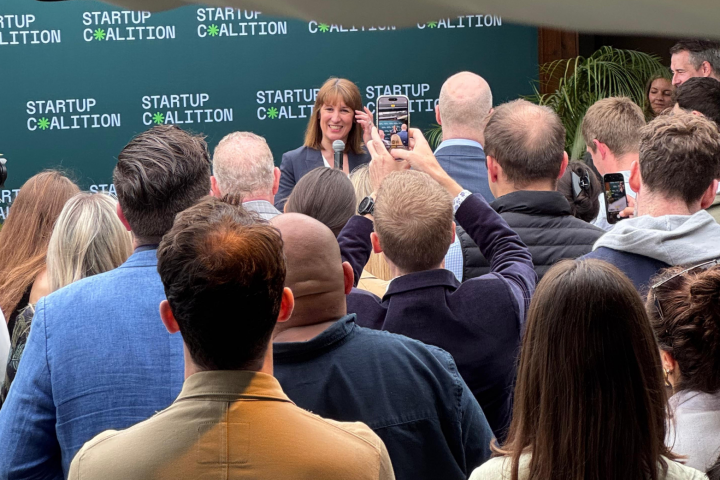Three years after generative AI exploded onto the global stage, artificial intelligence has become a fixture in nearly every corner of the corporate world, but don’t mistake ubiquity for impact.
According to the latest McKinsey Global Survey on the state of AI, released this month, 88% of organizations now report regularly using AI in at least one business function, up from 78% just a year ago.
Yet despite this surge in adoption, most companies are still stuck in the pilot phase, with only about one-third having begun to scale AI across their enterprises.
The data, drawn from responses by 1,993 professionals across 105 countries, paints a clear picture: AI is everywhere, but its transformative power remains largely untapped.
One of the most talked-about developments in AI is the rise of AI agents: systems built on foundation models that can plan, act, and execute multi-step tasks autonomously.
These aren’t chatbots that answer questions, they’re tools that can, for instance, manage IT service desks or conduct deep research for knowledge management.
Interest is high: 62% of surveyed organizations are already experimenting with AI agents. But real-world deployment is limited. Only 23% report scaling agent use—and even then, typically in just one or two business functions.
“Already, about a quarter of our survey respondents report that they have started scaling at least one agentic AI system,” notes McKinsey senior fellow Michael Chui, “but usually only in one or two business functions.”
The sectors leading in agent adoption are technology, media and telecommunications, and healthcare.
Within companies, IT and knowledge management functions are the most common testing grounds, but even there, fewer than 10% of respondents say their organizations are scaling agents.
Despite widespread use, AI’s financial impact remains modest at the company level. Only 39% of respondents say AI has affected their organization’s EBIT (earnings before interest and taxes), and for most of them, that impact is under 5%.
Yet the story isn’t all cautionary. At the use-case level, benefits are real. AI is driving cost reductions in software engineering, manufacturing, and IT.
It’s boosting revenue in marketing and sales, corporate strategy, and product development. And crucially, 64% of respondents say AI is enabling innovation, a leading indicator of longer-term value.
“The real results emerge when leaders are also able to use technology to innovate,” says Alex Singla, global leader of QuantumBlack, AI by McKinsey.
“All business leaders are seeking to make their companies more efficient, but… companies reporting EBIT impact tend to have progressed further in their scaling journeys.”
A blueprint for success
A small but telling group stands out: the “AI high performers”, just 6% of respondents, who report AI contributing more than 5% of EBIT and delivering “significant value.” What sets them apart?
First, ambition. These companies don’t just automate, they transform. They’re 3.6 times more likely than others to aim for transformative change using AI, not just incremental improvements.
Second, workflow redesign. While many companies bolt AI onto existing processes, high performers fundamentally rewire how work gets done. They’re nearly three times more likely to have redesigned workflows around AI capabilities.
Third, leadership commitment. High performers are three times more likely to say senior leaders “demonstrate ownership” of AI, championing it, role-modeling its use, and ensuring budget alignment.
And fourth, investment. Over one-third of high performers allocate more than 20% of their digital budgets to AI, compared to just 7% of other companies.
“They treat AI as a catalyst to transform their organizations,” explains associate partner Tara Balakrishnan. “Positioning AI as an enabler of growth and innovation creates space within the organization to go after cost improvements more effectively.”
As AI use expands, so do questions about its effect on employment. The survey reveals a split outlook:
- 43% expect no change in total workforce size over the next year
- 32% anticipate a decrease of 3% or more
- 13% predict an increase
Interestingly, while some roles may shrink due to automation, companies, especially large ones, are actively hiring for AI-related positions.
Software engineers, data engineers, and machine learning engineers are in highest demand.
Larger firms (with $1B+ in revenue) are twice as likely to hire talent focused on data integration and model industrialization.
“We’re seeing changes in the skills demanded for a range of jobs,” says Lareina Yee, a senior partner and director at the McKinsey Global Institute.
“Typically, this is about incorporating AI into existing roles or workflows.”
With greater use comes greater risk. Over half (51%) of AI-using organizations report experiencing at least one negative consequence from AI in the past year, most commonly inaccuracy (30%).
Other concerns include intellectual property infringement, regulatory non-compliance, and privacy violations.
Encouragingly, risk mitigation is improving. Organizations now report managing an average of four AI-related risks, up from just two in 2022.
High performers, who deploy twice as many use cases as peers, are also more proactive—they experience more risks but mitigate more of them too.
“Because they are more ambitious, AI high performers are likely to be using the technology in mission-critical contexts that require sensitive monitoring,” notes senior partner Alexander Sukharevsky.
“Their ambition also has considerable upside… Achieving measurable results requires leaders to pursue a bold agenda, driven by innovation and transformation.”
As McKinsey’s latest data shows, only a small fraction of organizations are moving beyond experimentation to redesign how work gets done, led by executives who see AI not as a gadget, but as a growth engine.
The next phase will separate adopters from transformers. The real winners will be those bold enough to reimagine their businesses around AI’s capabilities, treating it not as a passing trend, but as the architecture of the next corporate revolution.











